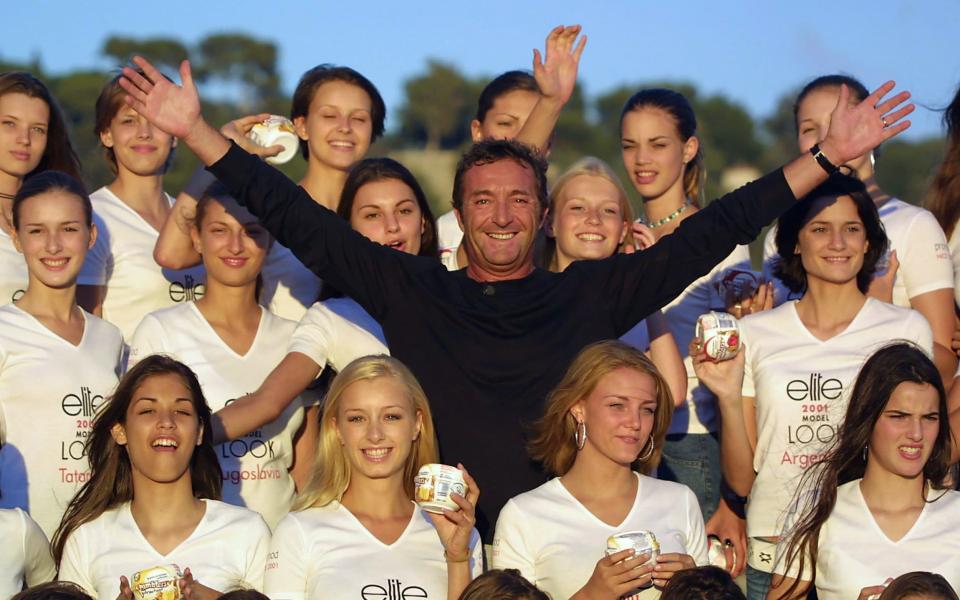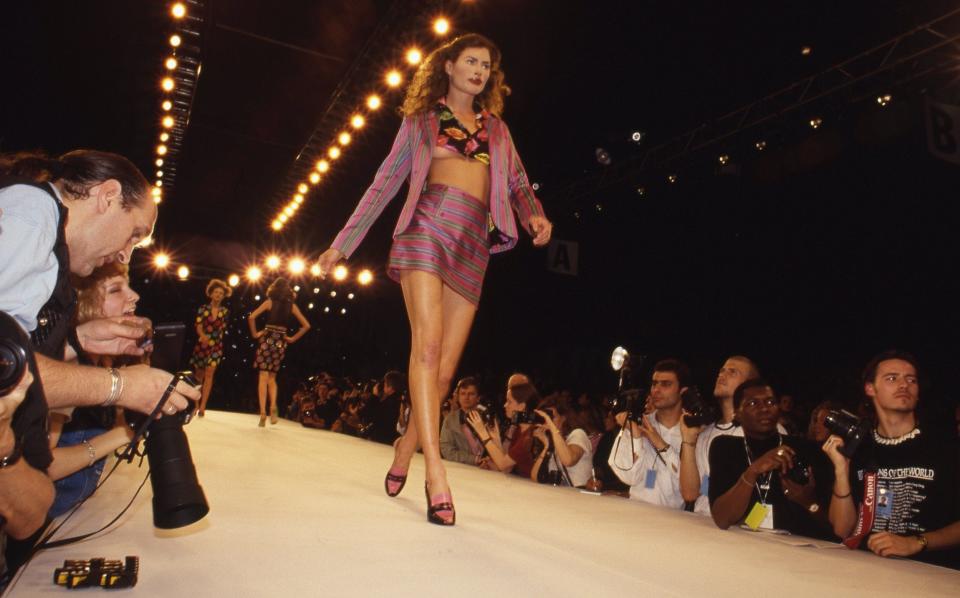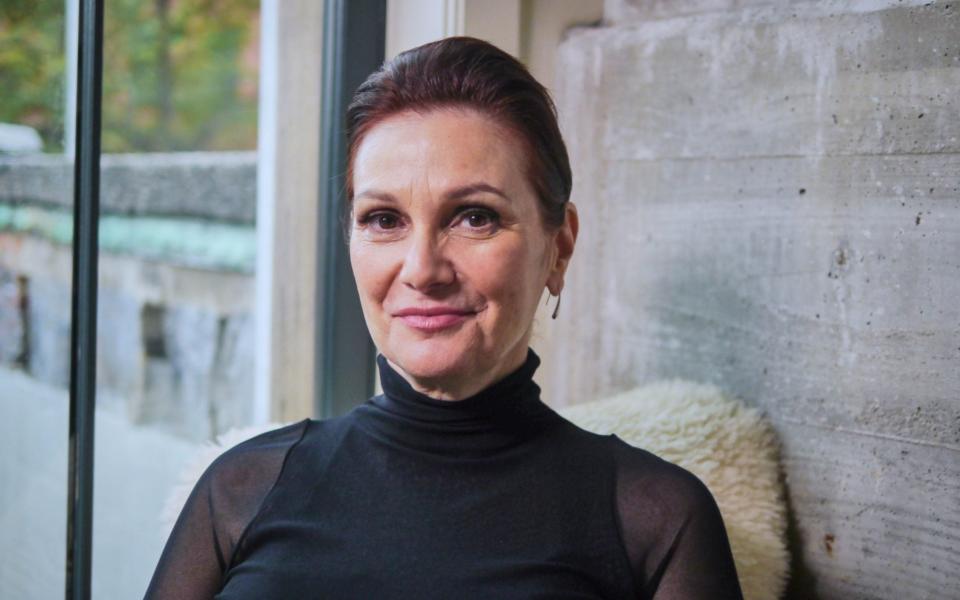The sad and ugly business of being a model

As a low-ranking member of a fashion magazine in the mid-nineties, I would go to Milan for fashion week. Young enough to have the time and energy to go to one of the many after-parties the fashion industry likes to throw, I found myself in a nightclub one evening alongside some colleagues.
Sitting on one of the leather banquettes was a model I’d recently interviewed, one of four touted by her agency as “one to watch”. I can’t remember her name - Caroline? Carolyn? - but I remember her black PVC thigh boots and her dead-eyed stare when I gauchely attempted to say hello.
Caroline/Carolyn was intoxicated. She was also surrounded by men: men decades older than her, dressed in suits that suggested respectability but were a guise for its opposite. Whether you were in Milan or Paris, every fashion after-party was the same: over-dressed men hitting on under-dressed women, as they do in every nightclub, all over the world.
That many of these “women” were under-age - in some cases, girls as young as 14 - is one of many shocking revelations brought to light by Scouting For Girls: Fashion’s Darkest Secret, a three-part documentary that claims to expose the systemic exploitation and sexual abuse of models by the very people charged with keeping them safe.
Four model agents in particular are named: John Casablancas, Gerald Marie, Jean Luc Brunel and Claude Haddad, all of whom worked for or were linked to Elite, the international model agency that prospered in the 1990s.

This was the era of the supermodel, and Elite had some of fashion’s biggest names on its books, including Cindy Crawford, Naomi Campbell, Claudia Schiffer, Eva Herzigova and Linda Evangelista, the Canadian model oft misquoted as saying she wouldn’t get out of bed for less than $10,000 a day.
That Evangelista, 57, was married to a person claimed to be one of the industry’s worst offenders is an indictment of the arrogant, chilling way they abused their prey right under the noses of those who trusted them most. Evangelista met Gerald Marie, Elite’s president from 1984 - 2000, when she was 22, married him in 1987 and divorced him six years later. One of the most poignant stories in the documentary is told by the model Carré Otis, 53, who recounts being sent to Paris aged 17, to be “looked after” by Marie at his Paris apartment. Arriving at the lavish property, she remembers the door being opened by Evangelista. Immediately, she felt intimidated and awe-struck - but also safe.
The feeling didn’t last. Within weeks, she claims, Marie was raping her. “The expectation was that when Linda left town for 6-10 weeks, I would put up with his advances several times a week,” explains Otis, still tearful at the memory. “I felt I had to or I’d lose my job.”
The documentary suggests this pattern of behaviour recurred time and again, with only the models changing, as their predators looked for fresher meat. This was greatly facilitated by Elite’s “Look of the Year” competition, a horrifyingly sexist event that saw girls as young as 13 parade in swimsuits in front of an all-male panel of judges whose only qualification seems to be that they have paid for the privilege - Donald Trump among them.

“We’ll be observing your behaviour and seeing how much you want to succeed,” says John Casablancas, Elite’s owner and the competition’s mastermind. It’s gut-wrenching to realise that these events took place not in the fifties, but in the early nineties.
“The contest became a fishing hole; a place where they singled out girls who were vulnerable and might be sexually available,” says Marie P Anderson, a former Elite employee turned whistleblower.
One girl singled out was 15 year-old Shawna Lee, whose prize upon winning the 1992 contest was a $150,000 modelling contract and a trip to Paris. Like Carré Otis, she was invited to stay with Gerald Marie, and soon, it is claimed, was being raped by him. The chaperone her mother had been promised didn’t materialise, but, as Anderson remarks, “grooming the parents is part of the process. Once they trusted you they’d hand you over their children. It’s so much easier to control a 15 year-old when they can’t run to their mum.”

Isolating these young girls from their parents, and then from each other (“they’d pit models against each other, not wanting them to be friends”, says Anderson), made it so much easier to control them. As did the egregious practice of billing them for every taxi, meal and photograph the agency took on their behalf, thus putting them in a position of having to continue to work to pay off their debts - a process that seemed endless, since Elite took 20% of their earnings.
All are hallmarks of coercive control, a phrase that didn’t exist in the nineties. Back then, “grooming” wasn’t a widely known term - yet, this is exactly what, it is alleged, occurred on a mass scale, with 14 year-olds being sent to parties described as “payback for investors and friends”.

It’s barely surprising that one model agent, Jean-Luc Brunel, had links to Jeffrey Epstein, flying on his private jet 25 times and supplying him with over 1000 models. It’s even less surprising that after being arrested in 2020, Brunel was found dead in his prison cell earlier this year.
The most explicit evidence of human trafficking comes from former model Jill Dodd, who was sent to Monte Carlo by Elite and ended up dating Saudi billionaire Adnan Khashoggi. She later learned that he picked her photo out of a book and paid Elite £50,000 to meet her. “I’d been sold,” she says, explaining that the practice was commonplace.
It’s open to debate how commonplace the abuse of young girls within the modelling industry is in 2022. “This is a culture that has created an atmosphere in which these things are allowed to develop, take root and blossom, and it’s not going away,” notes Michael Gross, the author and journalist who wrote about systemic abuse as far back as 1994 in his book Model: The Ugly Business of Beautiful Women. “It’s gotten a little bit better, and hopefully it will continue to get better.”
Otis was instrumental in bringing together 14 women to testify to a Paris prosecutor that they were sexually assaulted by Marie, who still denies any wrongdoing. “The hope is not only justice, but that it’s a healing process for us, and a good opportunity to help others come forward and realise they’re not alone,” says Otis. “This is really about sparking a greater conversation so that we can start to address these issues and see change.”
In addition to Otis, models including Karen Elson, Milla Jovovich and Paulina Porizkova have been vocal about their own experiences, and the need for change. As the Me Too movement, and specifically the case of Harvey Weinstein, has proved, the more women who speak up, the more likely it is that these predators will eventually be convicted.

I say that but I don’t entirely believe it - not when Gerald Marie still denies wrongdoing continued to work for Elite for years after accusations first surfaced (he left in 2010) and is currently living his best life in Ibiza. There are other accused men, too, who continue to evade justice. Men like these don’t change. Why would they, when their power seems to exonerate them from consequence?
What has changed, however, is that models have platforms through which their voices can be heard, independently of the agencies that seek to control them. Instagram, Twitter and YouTube have allowed them to connect with each other, corroborate each others’ experiences, tell their stories to the world and by doing so, slowly affect change by bringing predators to account.
For anyone who has been isolated, worn down, blackmailed or threatened by an abuser, these platforms can be a lifesaver.
“I really thought that everything that was happening was just happening to me,” says Otis, who has battled suicidal thoughts. Abuse thrives on secrecy. Any platform that helps expose this culture of silence is invaluable. As are organizations like Model Alliance, the non-profit set up by former model Sara Ziff to promote accountability within the fashion industry, and help ensure models can work without fear, harassment, abuse or discrimination in the future. Which is what all models, all women, all people, deserve.

 Yahoo Movies
Yahoo Movies 
